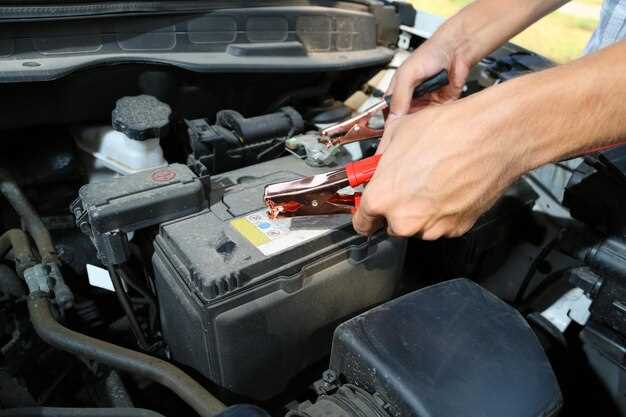
How to know if your car battery needs replacing

Your car battery plays a crucial role in the overall functionality and reliability of your vehicle. Over time, every battery experiences wear and tear, leading to a decrease in its lifespan. Recognizing the signs of a failing battery can save you from unexpected breakdowns and costly repairs. Being proactive about your battery’s condition is essential for maintaining the optimal performance of your car.
One of the most common indicators that your battery may need replacement is difficulty in starting the engine. If you notice a sluggish crank or if your car struggles to start, it could mean that your battery is losing its ability to hold a charge. Other signs include dimming headlights, electrical issues, and the illuminated battery warning light on your dashboard, all of which suggest that it’s time to evaluate your battery’s health.
Understanding the average lifespan of a car battery–typically 3 to 5 years–can help you stay ahead of potential issues. Regular maintenance and being aware of the telltale signs of wear can ensure that you do not find yourself stranded. If you observe any of these symptoms, it may be wise to have your battery tested and consider a replacement before it completely fails.
Common Symptoms Indicating a Failing Battery

One of the primary signs that your battery may be nearing the end of its lifespan is difficulty starting your vehicle. If you notice slow engine cranking when you turn the key, it may indicate that the battery is losing its capacity to hold a charge.
Another common symptom is dim or flickering headlights. If your headlights appear weaker than usual or fluctuate in brightness, this can suggest that your battery is unable to provide adequate power. Inconsistent electrical performance, such as malfunctioning gauges or dashboard warning lights, can also signify that the battery is failing.
Additionally, if you experience frequent issues with your car’s electrical components, such as the radio, power windows, or air conditioning, the battery may be to blame. These systems rely heavily on a stable power source, and any irregularity could hint at battery degradation.
It’s also important to pay attention to any swelling or physical damage to the battery casing. A swollen battery can indicate internal failure and poses significant safety risks. Furthermore, if you notice a buildup of corrosion around the battery terminals, this can be a sign of poor connections and may suggest that the battery is no longer functioning optimally.
Lastly, if your battery’s age exceeds three to five years, it’s wise to monitor its performance closely. As batteries age, their effectiveness diminishes, and it may be time for replacement to ensure reliable vehicle operation.
Understanding Average Lifespan of Car Batteries
The average lifespan of a car battery typically ranges from three to five years, depending on various factors. Understanding these factors can help you anticipate when it might be time for a replacement. Environmental conditions, such as extreme temperatures, can significantly affect battery performance and longevity. Hot climates tend to accelerate the deterioration of the battery’s components, while extremely cold weather can reduce its efficiency.
The type of battery also plays a crucial role in determining its lifespan. Standard lead-acid batteries generally have a shorter lifespan compared to advanced options like absorbed glass mat (AGM) or lithium-ion batteries. Regular maintenance, including keeping terminals clean and ensuring a proper charge, can further enhance the longevity of your battery.
Additionally, driving habits impact battery life. Frequent short trips or prolonged periods of inactivity can lead to a decrease in lifespan, as the battery may not have sufficient time to recharge fully. Monitoring signs of wear or performance issues is essential, as even a battery that is within its average lifespan may begin to show symptoms of failure. Staying informed about the typical lifespan of your specific battery type can ensure timely replacements and prevent unexpected breakdowns.
Steps to Take When Your Battery is Weak

When you notice signs that your car battery is weak, taking prompt action can prevent further complications. Here are essential steps to consider:
1. Check Battery Connections: Start by inspecting the battery terminals for any signs of corrosion or loose connections. Clean the terminals with a mixture of baking soda and water if necessary, and tighten any loose connections to improve the flow of electricity.
2. Test the Battery: Utilize a multimeter to test the voltage of your battery. A healthy car battery typically shows a voltage of around 12.6 volts or higher. If the voltage is below 12.4 volts, your battery may require charging or replacement.
3. Charge the Battery: If the battery voltage is low, use a battery charger to restore its power. Follow the manufacturer’s instructions carefully. Make sure the vehicle is off while charging to avoid electrical issues.
4. Jump-Start the Car: If you need to get on the road quickly and the battery is almost dead, consider jump-starting the car using jumper cables and another vehicle. Be sure to connect the cables correctly to prevent damage to the electrical systems.
5. Monitor Electrical Systems: After charging or jump-starting, observe the car’s electrical systems. Flickering lights, slow cranking, or other electrical malfunctions may indicate that the battery is still weak or failing.
6. Replace the Battery: If your battery is old or consistently shows low voltage, it may be time to replace it. Choose a quality battery that fits your car’s specifications for optimal performance.
7. Seek Professional Help: If you are unsure about the condition of your battery or how to proceed, consult a qualified mechanic. They can provide a thorough assessment and recommend the best course of action.